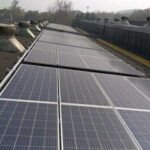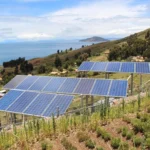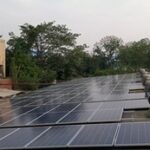UP Electricity Tariff Increase 2015-16: Rates Rise by Rs 0.40–1.00 per Unit – What Consumers Need to Know
UP Electricity Tariff Increase 2015-16: Rates Rise by Rs 0.40–1.00 per Unit – What Consumers Need to Know
As per the approved tariff order of UPERC dated 18th June 2015, the tariffs for the consumers in the state of Uttar Pradesh are increased for all the consumer categories. The increased electricity tariffs varies from Rs 0.40 per unit to Rs 1.0 per unit depending on your consumer category (with the exception of Private Advertising and Sign Post) and the number of units consumed. A Unit is equivalent to one kWh (kilo watt hour).
The highest increase in tariff is witnessed by the Private Advertising and Sign Post going up from Rs 14 per kWH to Rs 18 per kWh. The demand charges are also significantly increased for this category.
Apart from an increase in the Fixed Charges and Variable Charges, the regulatory surcharge has also been increased from 5.22% to 7.12% which is applicable on the fixed and variable charges. The regulatory surcharge for Noida electricity consumers remains same at 8% as per the order. KESCO (Kanpur) consumers will be levied a regulatory surcharge of 4.13% only.
Overall the variable charges (consisting of Energy charges, Regulatory Surcharge and Taxes) will vary from a minimum of Rs 6.00 to a maximum of Rs 8.8 per kWh for the urban domestic, commercial and industrial consumers in the state. The demand charges will be over and above these charges.
The electricity charges for the consumers in Noida are typically lower by around 15 paise per kWh (Unit) vis-à-vis that for the other consumers in the state. However, the regulatory surcharge is more here by 0.88% (around 6-10 paise per kWh).
In another important decision, for the purpose of billing below 10 kW load, the fixed charge will be computed on the basis of contracted load in kW. Therefore, consumer upto 10 kW load will have to pay fixed charges as per their contracted load. However, for all consumers with contracted load of 10 KW and above having TOD/Demand recording meters installed, the billable load during a month shall be the actual maximum load as recorded by the meter or 75% of the contracted load, whichever is higher.
As such there is a strong incentive for the consumers having more than 10 KW load to decrease their maximum load to the extent possible. Rooftop solar solutions can be one way of decreasing the maximum peak.
FPPCA (Fuel and Power Purchase Cost Adjustment) surcharge is also expected to be further imposed on the consumers over and above their tariffs. The FPPCA surcharge would vary across categories depending on their approved Average Billing Rate.
Suggested Articles

Benefits of Solar Energy: Why Switching to Solar Makes Sense
Switching to solar energy offers numerous benefits, from lowering electricity bills to reducing your carbon footprint. This guide explores how solar power supports sustainable living, provides cost savings, and creates a cleaner environment for homes, businesses, and industries. Learn why adopting solar energy is not just smart, but essential for a greener future.

Solar Power System Efficiency: How to Calculate for Residential, Industrial & Commercial Use
Understand and measure your solar system’s performance. Maximize energy output at home, industrial units, and commercial buildings

Save on Electricity in Haryana Using Net Metering: A Complete Guide
Learn how to save on electricity in Haryana with net metering. Step-by-step guide on benefits, installation, and cost savings for your home or business

Affordable Solar Systems and Plants for Small and Medium Enterprises
Learn how SMEs can harness solar energy through tailored solar systems and plants to reduce electricity bills, improve sustainability, and boost efficiency.

Rooftop Solar: Reduce Your Electricity Bill and Increase Savings
Discover how installing a rooftop solar system can help you save on electricity bills, reduce peak demand charges, and take advantage of government incentives.
Breakthrough in Solar Technology: 33.2% Efficient Perovskite-Silicon Cell
Scientists achieve a breakthrough in solar technology with a perovskite-silicon tandem cell reaching a record 33.2% efficiency for higher energy output.

Group Net Metering for Solar Projects: A Smart Way to Maximize Solar Energy Generation
Discover how group net metering allows multiple participants to share solar energy from a single project, reduce electricity bills, and enhance solar efficiency.

India Solar Energy Policies: Key Updates and Government Initiatives
India is one of the leading countries in terms of solar energy development, having become the fastest-growing market for solar power globally.

Complete Guide To 100 kW Solar Setup Cost And Benefits In Uttar Pradesh
Planning to install a 100 kW solar power plant in Uttar Pradesh? This guide covers everything — from installation costs and available subsidies to long-term savings and payback time. Learn how investing in solar can reduce your electricity expenses and support a sustainable energy future for your business.

Choosing the Right Solar Panel: Complete Guide for India
Solar is among the fastest-growing industries in India. This is mainly because solar energy is not only renewable but is also attractive from a financial point of view.